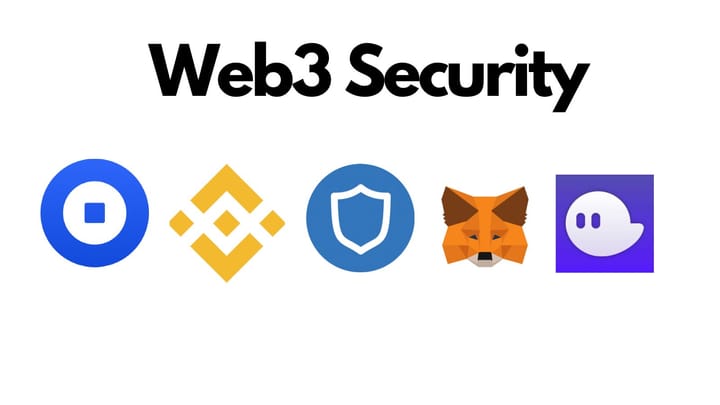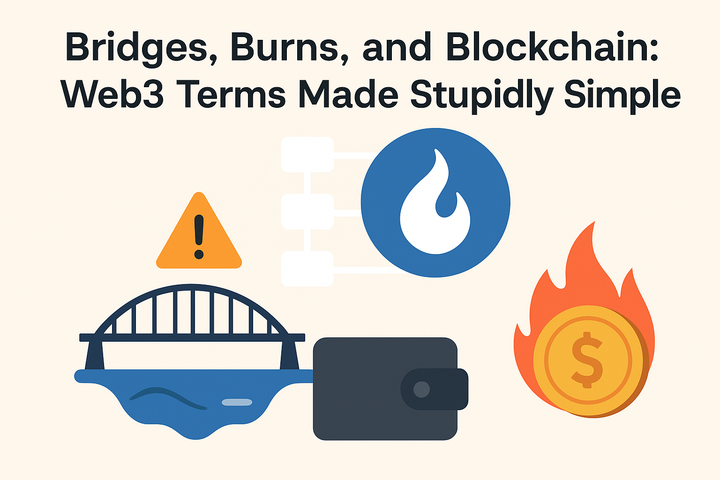Web3 UX Is Broken (But These Projects Are Fixing It)

If you’ve ever tried to use a Web3 app and felt like you needed a PhD in blockchain just to send a token, you’re not alone. The truth is, Web3 is packed with powerful ideas, but the user experience (UX) is still a big barrier for everyday people.
We’re promised a future where finance is decentralized, ownership is digital, and your data belongs to you but right now, the reality often looks like:
- Confusing wallet setups
- Gas fees you don’t understand
- Transactions failing for mysterious reasons
- Wallet addresses that feel like robot serial numbers
- Too many steps just to do something simple
It’s no wonder that for many newcomers, Web3 feels intimidating, clunky, and stressful.
The good news? A growing number of projects are working hard to fix Web3’s broken UX. They want to make decentralized tech as easy to use as your favorite mobile app without sacrificing the security and freedom that make Web3 special.
In this guide, we’ll:
- Break down why Web3 UX is so hard today.
- Look at real-world examples of bad UX in Web3.
- Explore the projects and innovations improving the experience.
- Imagine what a smooth, human-friendly Web3 could look like.
Part 1: Why Web3 UX Feels So Hard
Before we talk about solutions, let’s understand the pain points.
1. Wallets Are Still Scary
In Web2, signing up for an app means entering your email and a password you can reset anytime.
In Web3, you’re asked to download a crypto wallet, write down a 12- or 24-word seed phrase, and keep it safe forever. Lose it, and your assets are gone. No “Forgot password?” link.
For a newcomer, this is like being handed the keys to a safe filled with gold and told, “If you lose these keys, there’s no locksmith on earth who can help you.”
Example:
A new user tries to join a play-to-earn game. They download MetaMask, get their seed phrase, and copy it into a notes app on their phone, not realizing that if their phone gets hacked, their wallet can be drained instantly.
2. Transaction Language Is Alien
When you confirm a transaction in a wallet, you might see something like:
“You are approving this smart contract to spend your tokens.”
If you’re not deep into crypto, that’s not helpful. And if you get it wrong, you could approve a malicious contract to drain your funds.
Even worse, you’ll often see numbers in Gwei, not dollars, and have no idea what you’re paying until it’s too late.
3. Every Action Has a Price (Gas Fees)
Imagine if you had to pay a small toll every time you liked a post on Instagram or sent a text message.
In Web3, many actions sending tokens, swapping assets, interacting with NFTs require gas fees. They fluctuate, can be surprisingly high, and are paid in the blockchain’s native token (like ETH for Ethereum).
4. Multi-Chain Confusion
Today’s Web3 world isn’t just Ethereum, it’s Solana, Polygon, Avalanche, BNB Chain, Arbitrum, Optimism, and many more.
Each chain has its own wallet setup, tokens, and bridges. Moving assets between chains often feels like moving money between banks that speak different languages.
5. Too Many Steps
A simple task like buying an NFT can require:
- Creating a wallet
- Buying ETH on an exchange
- Transferring ETH to your wallet
- Connecting your wallet to a marketplace
- Approving a transaction
- Paying gas fees
That’s a lot to ask from someone used to one-click purchases on Amazon.
Part 2: Real-World Bad UX Examples
Let’s make this concrete.
- Example 1: A friend sends you an NFT, but you can’t see it in your wallet until you “manually add the token contract.”
- Example 2: You try to stake tokens in a DeFi app, but the transaction fails because you don’t have enough ETH for gas, even though you have plenty of the token you’re staking.
- Example 3: You accidentally interact with a scam airdrop because the token looked legitimate in your wallet.
These moments create fear, frustration, and mistrust exactly the opposite of what Web3 needs to grow.
Part 3: Who’s Fixing Web3 UX
The exciting part? Projects across the ecosystem are actively working on solutions. Here’s a look at some of the innovations making Web3 more approachable.
1. Smart Wallets & Account Abstraction
Projects like Safe (formerly Gnosis Safe), Argent, and Rabby Wallet are pioneering smart contract wallets that allow:
- Social recovery (friends can help recover your account)
- Transaction batching (multiple steps in one click)
- Paying gas fees in any token (not just the native coin)
This concept is called account abstraction, and it’s one of the biggest UX upgrades coming to Web3.
2. Human-Friendly Addresses
Instead of sending money to 0xA7D3...4f2b, services like ENS (Ethereum Name Service) and Unstoppable Domains let you send to alice.eth or bob.crypto.
This is like replacing a phone number with a contact name, safer and easier.
3. Gasless Transactions
Some apps, like dYdX and Immutable X, cover gas fees for users, making transactions feel more like normal app interactions.
For example, in Immutable’s NFT marketplace, you can buy and sell without worrying about fluctuating ETH prices for gas.
4. Cross-Chain Liquidity Protocols
Projects like Mitosis, LayerZero, and Wormhole are making it easier to move assets between chains without clunky bridges.
Instead of manually swapping and bridging, you can move value seamlessly, which feels much closer to Web2’s instant transfers.
5. Clearer Transaction Previews
Wallets like Rabby and Fire are improving transaction screens so you see exactly what you’re doing before you confirm.
No more guessing what “approve contract” really means you get a plain-English explanation.
6. Onboarding Without Seed Phrases
Some platforms now offer email + wallet hybrids (like Magic.link and Coinbase Wallet) where you can create a wallet with familiar login methods, but still take custody of your assets later.
Part 4: What the Future Could Look Like
If these improvements continue, a new user’s first Web3 experience could feel like this:
- Sign Up with an email or phone number, no scary seed phrase yet.
- Friendly Wallet Address like
yourname.ethautomatically created. - Clear Interface that shows balances in your currency and explains each step in plain English.
- Gas Fees Hidden or Paid in Any Token you hold.
- Cross-Chain by Default, you don’t even think about “which chain” you’re on.
- Built-In Safety Checks to warn you before you interact with risky contracts.
At that point, Web3 won’t feel like “crypto”, it will just feel like the internet.
Part 5: Why Fixing UX Matters
Without good UX, mass adoption of Web3 is impossible. The technology can be revolutionary, but if it’s stressful to use, people will stick to Web2.
Better UX means:
- More trust (users feel safe)
- More growth (easier for newcomers)
- More innovation (builders can focus on features, not fixing onboarding issues)
Think about the early days of the internet, before web browsers, it was mostly academics and hobbyists using command-line tools. Once browsers made it easy, the internet exploded in popularity.
Web3 is at a similar crossroads.
Conclusion
Yes, Web3 UX is broken right now. But it’s not a hopeless case. Projects across wallets, protocols, and infrastructure are already showing what’s possible when you put the user first.
In the near future, we could see a Web3 that’s secure, intuitive, and invisible in complexity where people use it not because they’re “into crypto,” but because it simply works better than the alternatives.
Until then, if you’re a builder, remember:
The best blockchain product is the one people can use without realizing it’s on a blockchain.



Comments ()